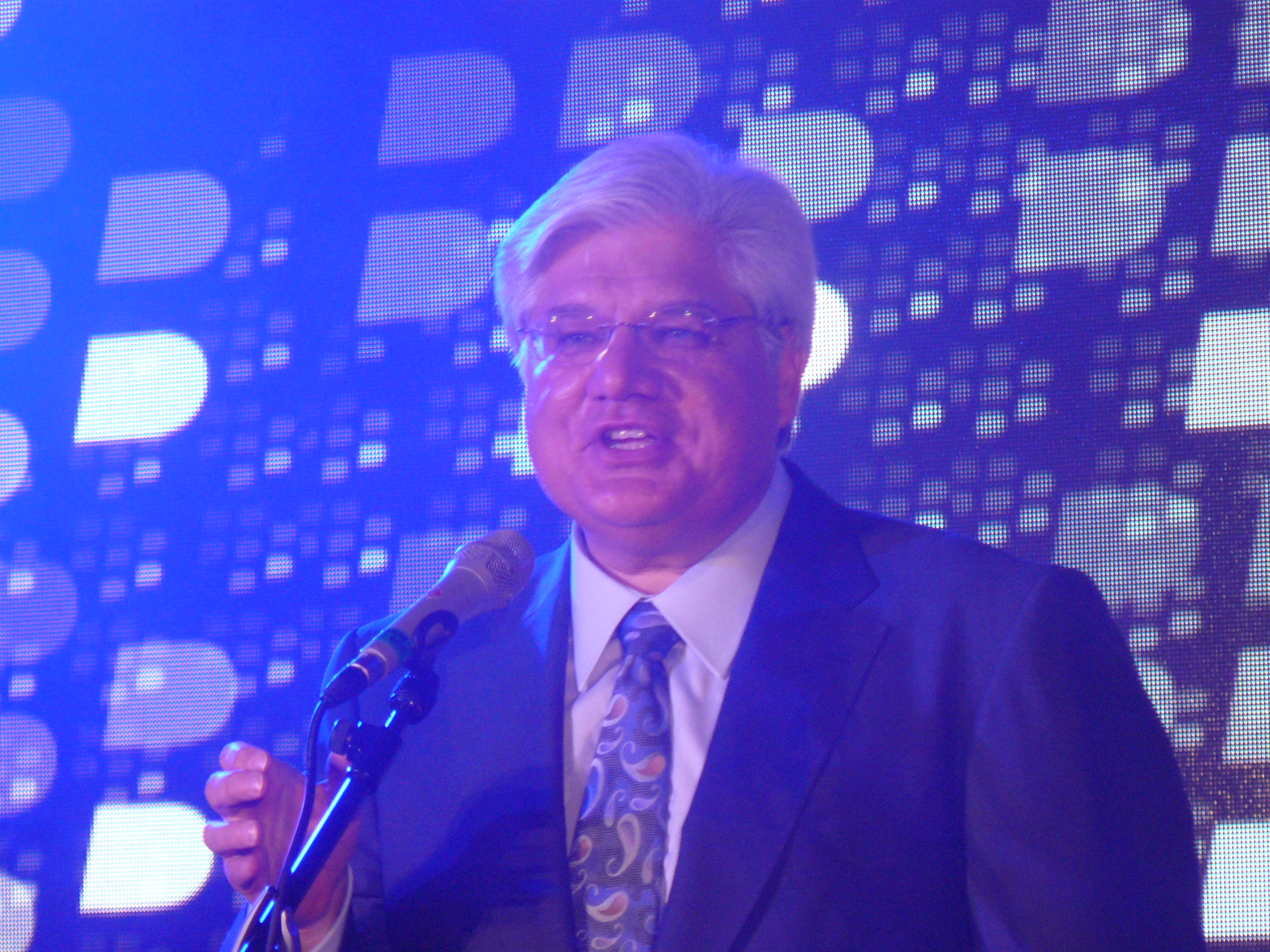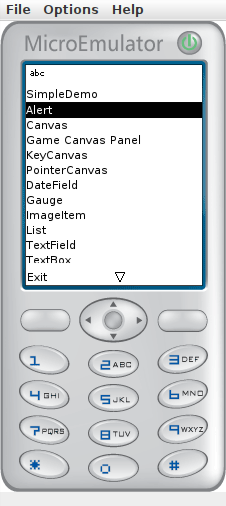|
BlackBerry OS
BlackBerry OS is a discontinued proprietary mobile operating system developed by Canadian company Research In Motion (now BlackBerry Limited) for its BlackBerry line of smartphone handheld devices. The operating system provides multitasking and supports specialized input devices adopted by BlackBerry for use in its handhelds, particularly the trackwheel, trackball, and in later years, the trackpad and touchscreen. Research from June 2011 indicated that approximately 45% of mobile developers were using the platform. BlackBerry OS was discontinued after the release of BlackBerry 10 in January 2013, and support for it ceased on January 4, 2022. Features The BlackBerry platform natively supports corporate email, through Java Micro Edition MIDP 1.0 and, later, a subset of MIDP 2.0, which allows complete wireless activation and synchronization with Microsoft Exchange, Lotus Domino, or Novell GroupWise email, calendar, tasks, notes and contacts, when used with BlackBerry E ... [...More Info...] [...Related Items...] OR: [Wikipedia] [Google] [Baidu] |
Blackberry Logo
BlackBerry is a discontinued brand of handheld devices and related mobile services, originally developed and maintained by the Canada, Canadian company BlackBerry Limited, Research In Motion (RIM, later known as BlackBerry Limited) until 2016. The first BlackBerry device launched in 1999 in North America, running on the Mobitex network (later also DataTAC) and became very popular because of its "always on" state and ability to send and receive email messages wirelessly. The BlackBerry pioneered push notifications and popularized the practise of "Thumb keyboard, thumb typing" using its QWERTY keyboard, something that would become a trademark feature of the line. In its early years, the BlackBerry proved to be a major advantage over the (typically) one-way communication pagers and it also removed the need for users to tether to personal computers. It became especially used in the corporate world in the US and Canada. RIM debuted the BlackBerry in Europe in September 2001, but it ha ... [...More Info...] [...Related Items...] OR: [Wikipedia] [Google] [Baidu] |
Java Micro Edition
Java Platform, Micro Edition or Java ME is a computing platform for development and deployment of portable code for embedded and mobile devices (micro-controllers, sensors, gateways, mobile phones, personal digital assistants, TV set-top boxes, printers). Java ME was formerly known as Java 2 Platform, Micro Edition or J2ME. The platform uses the object-oriented Java programming language, and is part of the Java software-platform family. It was designed by Sun Microsystems (now Oracle Corporation) and replaced a similar technology, PersonalJava. In 2013, with more than 3 billion Java ME enabled mobile phones in the market, the platform was in continued decline as smartphones have overtaken feature phones. History The platform used to be popular in feature phones, such as Nokia's Series 40 models. It was also supported on the Bada operating system and on Symbian OS along with native software. Users of Windows CE, Windows Mobile, Maemo, MeeGo and Android c ... [...More Info...] [...Related Items...] OR: [Wikipedia] [Google] [Baidu] |
FM Radio
FM broadcasting is a method of radio broadcasting that uses frequency modulation (FM) of the radio broadcast carrier wave. Invented in 1933 by American engineer Edwin Armstrong, wide-band FM is used worldwide to transmit high fidelity, high-fidelity sound over broadcast radio. FM broadcasting offers higher fidelity—more accurate reproduction of the original program sound—than other broadcasting techniques, such as AM broadcasting. It is also less susceptible to Electromagnetic interference, common forms of interference, having less static and popping sounds than are often heard on AM. Therefore, FM is used for most broadcasts of music and general audio (in the audio spectrum). FM radio stations use the very high frequency range of radio frequency, radio frequencies. Broadcast bands Throughout the world, the FM broadcast band falls within the VHF part of the radio spectrum. Usually 87.5 to 108.0 MHz is used, or some portion of it, with few exceptions: * In the Commo ... [...More Info...] [...Related Items...] OR: [Wikipedia] [Google] [Baidu] |
Wi-Fi Calling
Wi-Fi calling, also called VoWiFi, refers to mobile phone voice calls and data that are made over IP networks using Wi-Fi, instead of the cell towers provided by cellular networks. Using this feature, compatible handsets are able to route regular cellular calls through a wireless LAN (Wi-Fi) network with broadband Internet, while seamlessly changing connections between the two where necessary. This feature makes use of the Generic Access Network (GAN) protocol, also known as Unlicensed Mobile Access (UMA). Voice over wireless LAN (VoWLAN), also voice over Wi‑Fi (VoWiFi), is the use of a wireless broadband network according to the IEEE 802.11 standards for the purpose of vocal conversation. In essence, it is voice over IP (VoIP) over a Wi-Fi network. Essentially, GAN/UMA allows cell phone packets to be forwarded to a network access point over the internet, rather than over-the-air using GSM/GPRS, UMTS or similar. A separate device known as a "GAN Controller" (GANC) receive ... [...More Info...] [...Related Items...] OR: [Wikipedia] [Google] [Baidu] |
Wi-Fi Hotspot
A hotspot is a physical location where people can obtain Internet access, typically using Wi-Fi technology, via a wireless local-area network (WLAN) using a router connected to an Internet service provider. Public hotspots may be created by a business for use by customers, such as coffee shops or hotels. Public hotspots are typically created from wireless access points configured to provide Internet access, controlled to some degree by the venue. In its simplest form, venues that have broadband Internet access can create public wireless access by configuring an access point (AP), in conjunction with a router to connect the AP to the Internet. A single wireless router combining these functions may suffice. A private hotspot, often called tethering, may be configured on a smartphone or tablet that has a network data plan, to allow Internet access to other devices via password, Bluetooth pairing, or through the moeex protocol over USB, or even when both the hotspot device a ... [...More Info...] [...Related Items...] OR: [Wikipedia] [Google] [Baidu] |
HTML Video
HTML video is a subject of the HTML specification as the standard way of playing video via the web. Introduced in HTML5, it is designed to partially replace the object element and the previous de facto standard of using the proprietary Adobe Flash plugin, though early adoption was hampered by lack of agreement as to which video coding formats and audio coding formats should be supported in web browsers. As of 2020, HTML video is the only widely supported video playback technology in modern browsers, with the Flash plugin being phased out. History of <video> element The element started being discussed by the WHATWG in October 2006. The element was proposed by Opera Software in February 2007. Opera also released a preview build that was showcased the same day, and a manifesto that called for video to become a first-class citizen of the web. <video> element examples The following HTML code fragment will embed a WebM video into a web page. This is fallback content t ... [...More Info...] [...Related Items...] OR: [Wikipedia] [Google] [Baidu] |
WebKit
WebKit is a browser engine primarily used in Apple's Safari web browser, as well as all web browsers on iOS and iPadOS. WebKit is also used by the PlayStation consoles starting with the PS3, the Tizen mobile operating systems, the Amazon Kindle e-book reader, Nintendo consoles starting with the 3DS Internet Browser, GNOME Web, and the discontinued BlackBerry Browser. WebKit started as a fork of the KHTML and KJS libraries from KDE, and has since been further developed by KDE contributors, Apple, Google, Nokia, Bitstream, BlackBerry, Sony, Igalia, and others. WebKit supports macOS, Windows, Linux, and various other Unix-like operating systems. On April 3, 2013, Google announced that it had forked WebCore, a component of WebKit, to be used in future versions of Google Chrome and the Opera web browser, under the name Blink. Its JavaScript engine, JavascriptCore, also powers the Bun server-side JS runtime, as opposed to V8 used by Node.js, Deno, and Blink. ... [...More Info...] [...Related Items...] OR: [Wikipedia] [Google] [Baidu] |
BlackBerry Bold
The BlackBerry Bold was a line of mid-range and high-end smartphones developed by BlackBerry Limited. The lineup was launched in 2008 with the BlackBerry Bold 9000. In 2009 the Form factor (mobile phones), form factor was shrunk with the 9700 and the BlackBerry Tour, 9630. In 2010, the 9650 and 9780 wwas released with BlackBerry OS 6. In 2011, the 9780 was replaced by the 9790/9788 alongside the 9900/9930 series. The 9900/9930 and 9790, which have additional touchscreen displays, released in August and November 2011, respectively. The Bold family was known for its distinctive Form factor (mobile phones), form factor, QWERTY keyboard, and typical BlackBerry messaging capabilities with a different keyboard than the BlackBerry Curve, Curve series. The Bold series was usually more expensive and had more expensive materials (e.g. leather, soft touch rubber, carbon fiber, metal) compared to the Curve (plastic, glossy), and had higher specifications. There were two basic form factors wit ... [...More Info...] [...Related Items...] OR: [Wikipedia] [Google] [Baidu] |
Wireless Application Protocol
Wireless Application Protocol (WAP) is an obsolete technical standard for accessing information over a mobile cellular network. Introduced in 1999, WAP allowed users with compatible mobile devices to browse content such as news, weather and sports scores provided by mobile network operators, specially designed for the limited capabilities of a mobile device. The Japanese i-mode system offered a competing wireless data standard. Before the introduction of WAP, mobile service providers had limited opportunities to offer interactive data services, but needed interactivity to support Internet and Web applications. Although hyped at launch, WAP suffered from criticism. However the introduction of GPRS networks, offering a faster speed, led to an improvement in the WAP experience. WAP content was accessed using a ''WAP browser'', which is like a standard web browser but designed for reading pages specific for WAP, instead of HTML. By the 2010s it had been largely superseded by mor ... [...More Info...] [...Related Items...] OR: [Wikipedia] [Google] [Baidu] |
BlackBerry Enterprise Server
BlackBerry Enterprise Server designates the middleware software package that is part of the BlackBerry wireless platform supplied by BlackBerry Limited. The software plus service connects to messaging and collaboration software (MDaemon Messaging Server, Microsoft Exchange, Lotus Domino, Novell GroupWise) on enterprise networks to redirect emails and synchronize contacts and calendaring information between servers, desktop workstations, as well as mobile devices. Some third-party connectors exist, including Scalix, Zarafa, Zimbra, and the Google Apps BES Connector, although these are not supported by BlackBerry Limited. As of June 2018, BlackBerry Enterprise Server has been renamed to BlackBerry Unified Endpoint Manager (UEM). BES Versions * 2.2: BES for Domino * 3.6: BES for Exchange * 4.0: BES for Exchange, Domino, and GroupWise * 4.1: BES for Exchange, Domino, and GroupWise * 5.0: BES for Exchange, Domino, and GroupWise * BES 10 * BES 10.1 * BES 10.2 * BES 12 *BES 12.1 ... [...More Info...] [...Related Items...] OR: [Wikipedia] [Google] [Baidu] |
Novell GroupWise
GroupWise is a messaging and collaboration platform from OpenText that supports email, calendaring, personal information management, instant messaging, and document management. The GroupWise platform consists of desktop client software, which is available for Windows, (formerly Mac OS X, and Linux), and the server software, which is supported on Windows Server and Linux. The platform also supports WebAccess, its browser-based webmail client. Mobile access to messaging, calendaring, contacts and other data from smartphones and tablet computers is supported (through the GroupWise Mobility Service software) via the Exchange ActiveSync protocol. Enterprise instant messaging and presence is handled by GroupWise Messenger, which integrates with GroupWise. The product's ownership history includes WordPerfect, Novell and Attachmate; Micro Focus's 2014 acquisition of ''Attachmate'' resulted in the product's Micro Focus GroupWise name. Micro Focus was acquired by OpenText and the ... [...More Info...] [...Related Items...] OR: [Wikipedia] [Google] [Baidu] |





